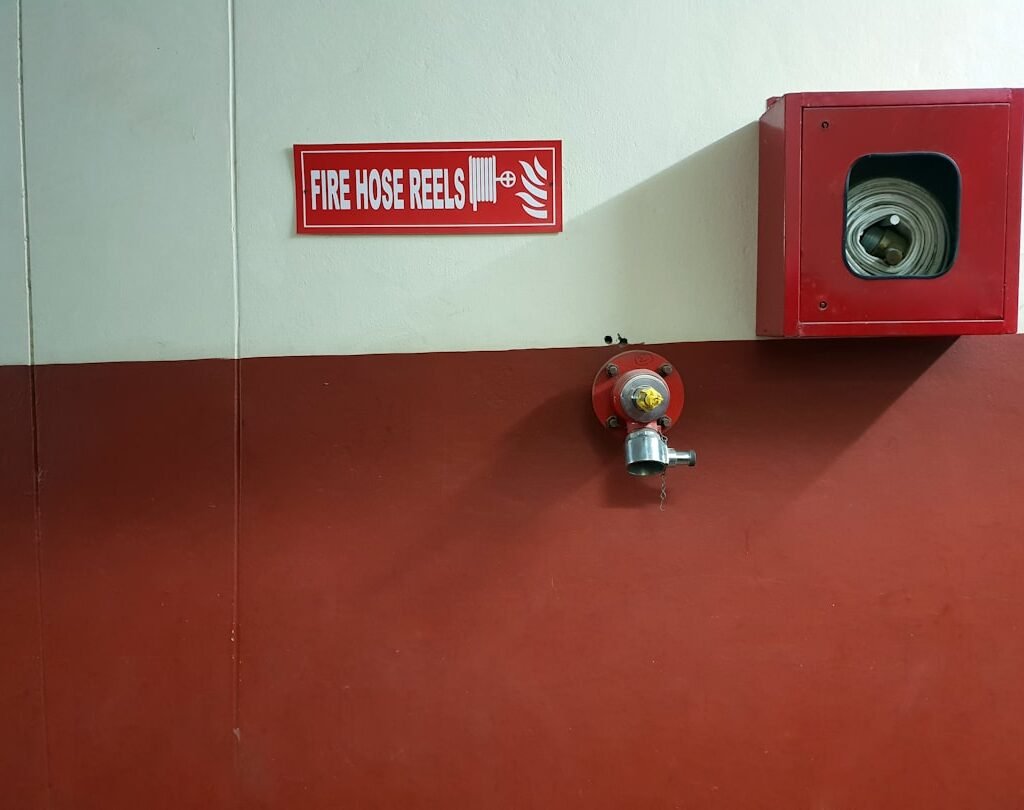The Occupational Safety and Health Administration (OSHA) plays a pivotal role in ensuring workplace safety across various industries, including fire safety. OSHA’s regulations are designed to protect employees from fire hazards that can lead to serious injuries or fatalities. One of the key components of OSHA’s fire safety requirements is the necessity for employers to conduct a thorough fire risk assessment.
This assessment involves identifying potential fire hazards within the workplace, evaluating the risks associated with those hazards, and implementing appropriate measures to mitigate them. For instance, in a manufacturing facility, flammable materials, electrical equipment, and heat-producing machinery may pose significant fire risks that need to be addressed. In addition to risk assessments, OSHA mandates that employers develop and maintain a written fire safety plan.
This plan should outline the procedures for preventing fires, responding to fire emergencies, and conducting regular fire drills. Employers are also required to ensure that employees are aware of the fire safety plan and understand their roles in the event of a fire. This includes knowing the locations of fire exits, understanding how to use fire extinguishers, and being familiar with evacuation routes.
By adhering to these requirements, businesses not only comply with OSHA regulations but also foster a culture of safety that can significantly reduce the likelihood of fire-related incidents.
Key Takeaways
- OSHA’s fire safety requirements are designed to protect employees and property from the dangers of fire.
- A comprehensive fire safety plan for your business should include evacuation procedures, fire extinguisher locations, and emergency contact information.
- Regular fire safety inspections are crucial for identifying and addressing potential hazards in the workplace.
- Providing fire safety training for employees can help prevent fires and ensure everyone knows how to respond in an emergency.
- Installing and maintaining fire safety equipment, such as smoke detectors and sprinkler systems, is essential for protecting your business and employees.
Creating a Fire Safety Plan for Your Business
Developing a comprehensive fire safety plan is essential for any business aiming to protect its employees and assets from fire hazards. A well-structured fire safety plan should begin with a detailed assessment of the workplace environment. This includes identifying potential ignition sources, such as faulty wiring or improperly stored flammable materials, as well as evaluating the layout of the building to determine the most effective evacuation routes.
For example, in an office setting, it may be necessary to designate specific exits for different departments to ensure a swift and organized evacuation during an emergency. Once potential hazards have been identified, the next step is to establish clear procedures for preventing fires and responding to emergencies. This may involve implementing regular maintenance schedules for electrical systems and heating equipment, as well as ensuring that all employees are trained in proper fire safety practices.
Additionally, the plan should include protocols for reporting fires and activating alarm systems. It is crucial that this plan is not static; it should be reviewed and updated regularly to reflect any changes in the workplace environment or operations. Engaging employees in this process can also enhance their understanding and commitment to fire safety.
Conducting Regular Fire Safety Inspections

Regular fire safety inspections are a critical component of maintaining a safe workplace environment. These inspections should be conducted systematically and frequently to identify any potential hazards before they escalate into serious issues.
During an inspection, various elements should be evaluated, including the condition of fire exits, the functionality of alarm systems, and the accessibility of firefighting equipment such as extinguishers and hoses.
For instance, if an inspection reveals that a fire exit is blocked by storage materials, immediate action must be taken to clear the path and ensure compliance with safety regulations. In addition to physical inspections, it is also important to review documentation related to fire safety practices. This includes checking maintenance records for fire safety equipment and ensuring that all employees have received adequate training on fire response procedures.
By conducting thorough inspections on a regular basis, businesses can not only comply with OSHA regulations but also create a proactive approach to fire safety that minimizes risks and enhances overall workplace safety.
Providing Fire Safety Training for Employees
Employee training is a fundamental aspect of any effective fire safety program. It is essential that all employees understand the potential fire hazards present in their workplace and are equipped with the knowledge and skills necessary to respond appropriately in case of an emergency. Training sessions should cover a variety of topics, including how to use fire extinguishers, recognizing the sound of alarms, and understanding evacuation procedures.
For example, hands-on training with different types of extinguishers can help employees feel more confident in their ability to respond effectively during a real emergency. Moreover, training should not be a one-time event; it should be an ongoing process that includes regular refresher courses and updates on any changes to fire safety protocols or equipment. Engaging employees through interactive training methods—such as simulations or role-playing scenarios—can enhance retention and ensure that they are prepared for various situations.
Additionally, fostering an open dialogue about fire safety can encourage employees to voice concerns or suggest improvements, creating a more collaborative approach to workplace safety.
Installing and Maintaining Fire Safety Equipment
The installation and maintenance of fire safety equipment are crucial elements in safeguarding a business against potential fire hazards. Essential equipment includes smoke detectors, fire alarms, sprinkler systems, and portable fire extinguishers. Each piece of equipment serves a specific purpose in detecting or suppressing fires, and their effectiveness relies heavily on proper installation and regular maintenance.
For instance, smoke detectors should be installed in strategic locations throughout the building—such as hallways, kitchens, and storage areas—to ensure early detection of smoke or heat. Regular maintenance checks are equally important; they ensure that all equipment is functioning correctly and complies with local codes and regulations. This may involve testing alarm systems monthly, inspecting extinguishers annually for pressure levels and physical damage, and ensuring that sprinkler systems are free from obstructions.
Keeping detailed records of maintenance activities not only helps businesses stay compliant with OSHA regulations but also provides valuable documentation in case of an incident.
Properly Storing Flammable Materials

The proper storage of flammable materials is a critical aspect of fire safety that cannot be overlooked. Many businesses handle substances that are highly combustible—such as chemicals, solvents, or fuels—and improper storage can lead to catastrophic consequences. To mitigate these risks, it is essential to follow established guidelines for storing flammable materials safely.
This includes using appropriate containers that are designed for hazardous materials and ensuring that they are clearly labeled with relevant hazard warnings. Additionally, flammable materials should be stored in designated areas away from ignition sources such as electrical equipment or open flames. For example, in a laboratory setting, flammable chemicals should be kept in flame cabinets or explosion-proof storage units that minimize the risk of ignition.
Furthermore, businesses should implement inventory management practices that ensure flammable materials are rotated regularly to prevent accumulation and reduce the likelihood of accidents.
Developing Emergency Response Procedures
An effective emergency response procedure is vital for minimizing chaos during a fire incident and ensuring the safety of all employees. These procedures should outline specific actions that employees must take when a fire alarm sounds or when they detect smoke or flames. For instance, employees should know whether they should attempt to extinguish small fires or evacuate immediately based on the severity of the situation.
Clear communication is essential; therefore, emergency response procedures should be easily accessible and prominently displayed throughout the workplace.
Moreover, conducting regular drills is an integral part of reinforcing these procedures. Fire drills allow employees to practice their responses in a controlled environment, helping them become familiar with evacuation routes and assembly points outside the building.
It is also beneficial to involve local fire departments in these drills; they can provide valuable feedback on response times and offer insights into improving emergency procedures. By developing comprehensive emergency response procedures and regularly practicing them, businesses can significantly enhance their preparedness for potential fire emergencies.
Staying Up-to-Date with OSHA Regulations
Staying informed about OSHA regulations is essential for any business committed to maintaining a safe work environment. OSHA frequently updates its standards based on new research findings, technological advancements, and changes in industry practices. Therefore, it is crucial for employers to regularly review these regulations to ensure compliance and protect their employees from potential hazards.
Subscribing to OSHA newsletters or participating in industry associations can provide valuable insights into regulatory changes and best practices. Additionally, businesses should consider conducting periodic audits of their fire safety programs against current OSHA standards. This proactive approach not only helps identify areas for improvement but also demonstrates a commitment to employee safety that can enhance company reputation.
Engaging with legal experts or consultants who specialize in OSHA compliance can further ensure that businesses remain aligned with evolving regulations while fostering a culture of safety within their organization.
FAQs
What are OSHA fire safety requirements?
OSHA fire safety requirements are regulations set by the Occupational Safety and Health Administration (OSHA) to ensure that businesses provide a safe and healthy work environment for their employees in relation to fire hazards.
What are some examples of OSHA fire safety requirements?
Examples of OSHA fire safety requirements include having fire extinguishers readily available, implementing an emergency action plan, providing proper training for employees on fire safety procedures, and maintaining clear exit routes.
How can businesses ensure compliance with OSHA fire safety requirements?
Businesses can ensure compliance with OSHA fire safety requirements by conducting regular fire safety inspections, providing necessary fire safety equipment, training employees on fire safety procedures, and keeping documentation of fire safety training and drills.
What are the consequences of non-compliance with OSHA fire safety requirements?
Non-compliance with OSHA fire safety requirements can result in fines and penalties for businesses. Additionally, failure to comply with these requirements can put employees at risk of injury or death in the event of a fire.
Where can businesses find more information on OSHA fire safety requirements?
Businesses can find more information on OSHA fire safety requirements on the official OSHA website, through OSHA-approved training programs, and by consulting with fire safety professionals or consultants.





